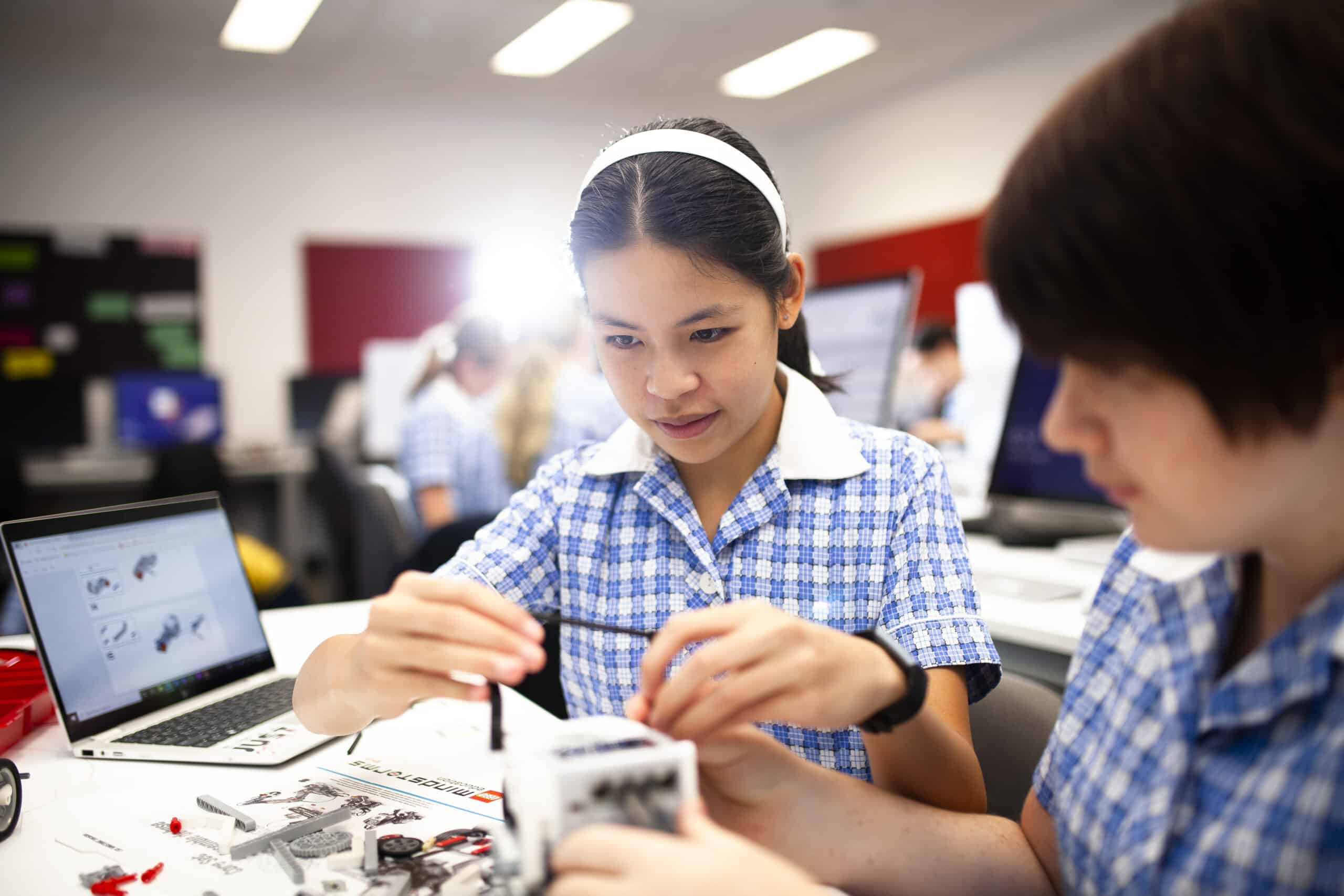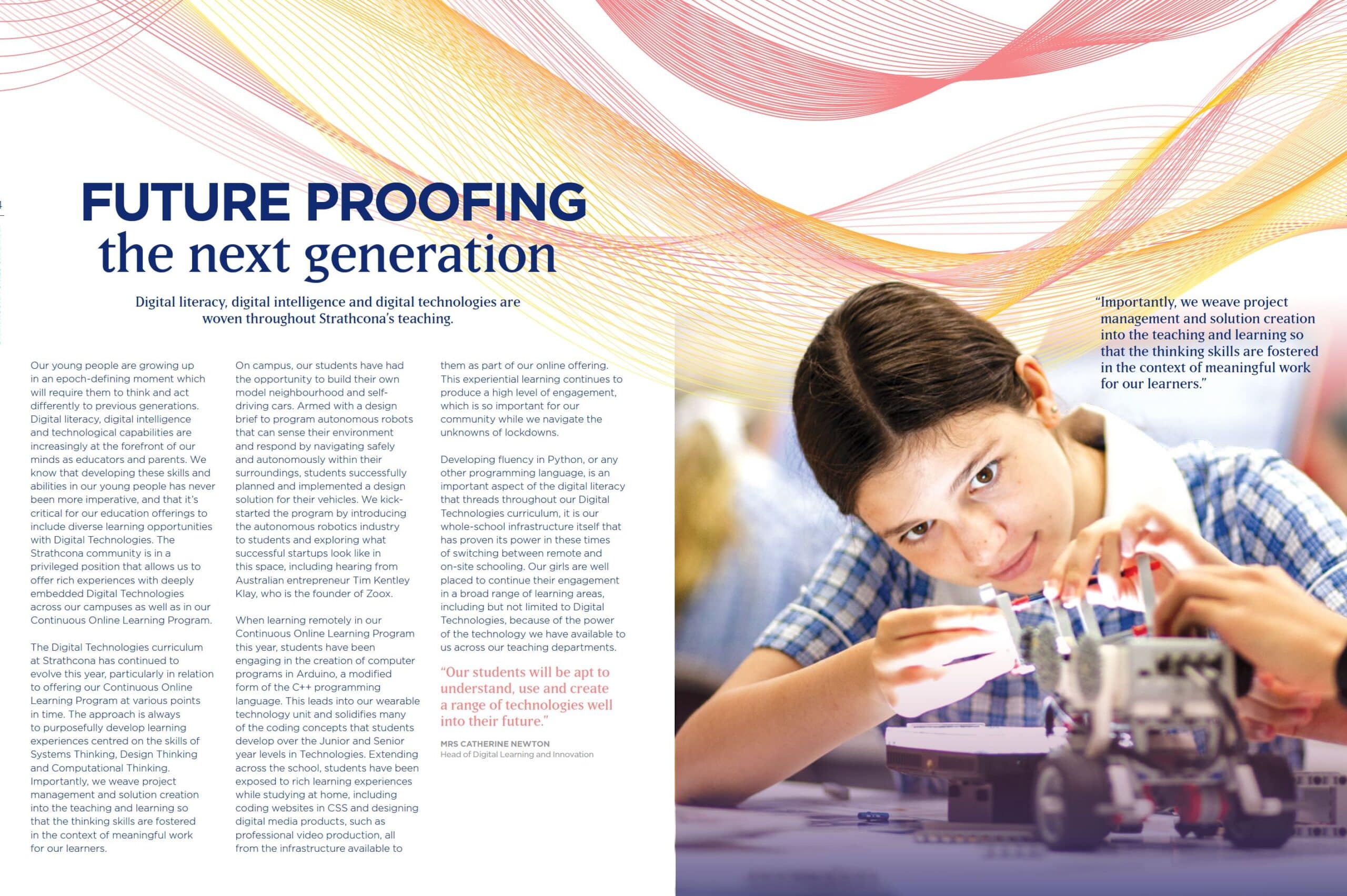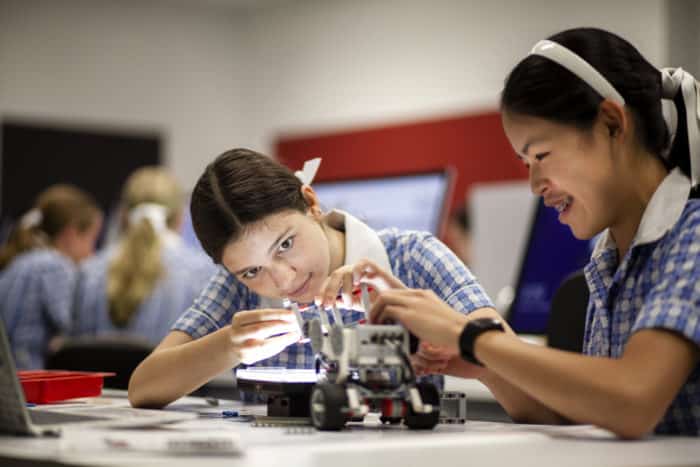Our young people are growing up in an epoch-defining moment which will require them to think and act differently to previous generations.
Digital literacy, digital intelligence, and technological capabilities are increasingly at the forefront of our minds as educators and parents. We know that developing these skills and abilities in our young people has never been more imperative, and that it’s critical for our education offerings to include diverse learning opportunities with Digital Technologies. The Strathcona community is in a privileged position that allows us to offer rich experiences with deeply embedded Digital Technologies across our campuses as well as in our Continuous Online Learning Program.
The Digital Technologies curriculum at Strathcona has continued to evolve this year, particularly in relation to offering our Continuous Online Learning Program at various points in time. The approach is always to purposefully develop learning experiences centred on the skills of Systems Thinking, Design Thinking, and Computational Thinking.
Importantly, we weave project management and solution creation into the teaching and learning so that the thinking skills are fostered in the context of meaningful work for our learners.
On-campus, our students have had the opportunity to build their own model neighbourhood and selfdriving cars. Armed with a design brief to program autonomous robots that can sense their environment and respond by navigating safely and autonomously within their surroundings, students successfully planned and implemented a design solution for their vehicles. We kickstarted the program by introducing the autonomous robotics industry to students and exploring what successful startups look like in this space, including hearing from Australian entrepreneur Tim Kentley Klay, who is the founder of Zoox.


“Importantly, we weave project management and solution creation into the teaching and learning so that the thinking skills are fostered in the context of meaningful work for our learners.”
When learning remotely in our Continuous Online Learning Program this year, students have been engaging in the creation of computer programs in Arduino, a modified form of the C++ programming language. This leads into our wearable technology unit and solidifies many of the coding concepts that students develop over the Junior and Senior year levels in Technologies. Extending across the school, students have been exposed to rich learning experiences while studying at home, including coding websites in CSS and designing digital media products, such as professional video production, all from the infrastructure available to them as part of our online offering. This experiential learning continues to produce a high level of engagement, which is so important for our community while we navigate the unknowns of lockdowns.
Developing fluency in Python, or any other programming language, is an important aspect of the digital literacy that threads throughout our Digital Technologies curriculum, it is our whole-school infrastructure itself has proven its power in these times of switching between remote and on-site schooling. Our girls are well placed to continue their engagement in a broad range of learning areas, including but not limited to Digital Technologies, because of the power of the technology we have available to us across our teaching departments.
“Our students will be apt to understand, use and create a range of technologies well into their future.”
MRS CATHERINE NEWTON
Head of of Digital Learning and Innovation


Click here to read the full edition of the Strathcourier.

